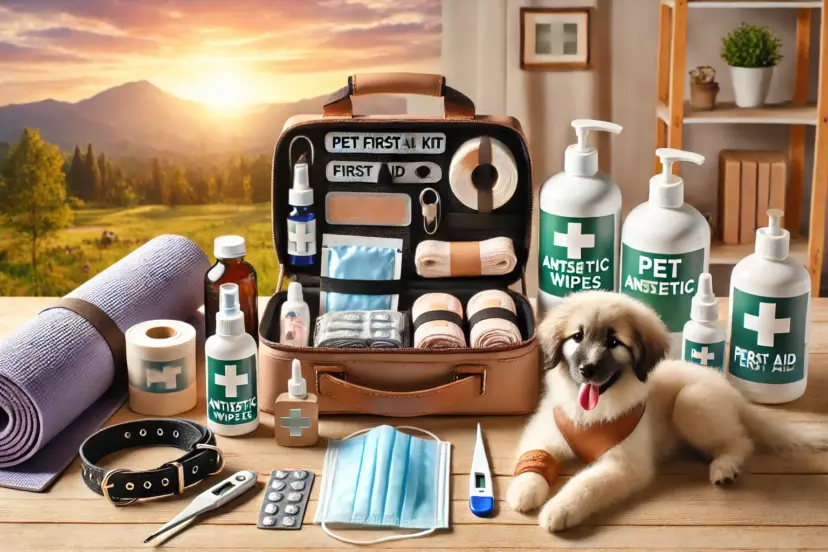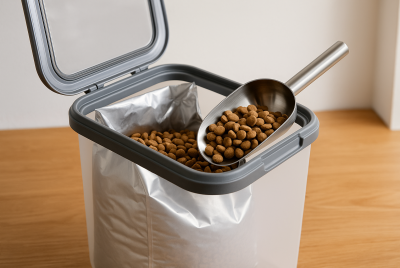Urgent Pet Care: Taking Action for Your Furry Friend
We may earn a commission for purchases made using our links. Please see our disclosure for more details.
Panicking in a pet emergency is common. After all, our pets are members of the family, and seeing them in pain can make anyone’s heart race. The fact is that maintaining composure, organization, and understanding is crucial when it comes to emergency pet care. This manual is not merely a list of guidelines; it is a way to confidently manage emergencies, no matter how terrifying they may appear. Being a pet parent, not just a pet owner, involves being ready for anything. Let’s begin.
Understanding Urgent Pet Care
Pet care that is urgent? Consider it first aid for our feathered (or four-legged) pals. It’s your responsibility to step up and act fast when they experience unexpected symptoms, an injury, or even an unexplained disease. But keep in mind that it’s all about filling the gap until you can see a veterinarian, not taking the place of their knowledge.
Recognizing an Emergency: Know the Signs
How can you tell if anything is an emergency, then? It’s not always clear, is it? (Pets are known to “tough it out” even when something is wrong.) Keep an eye out for symptoms such as abrupt lethargy, unresponsiveness, frequent vomiting, breathing difficulties, seizures, or obvious injuries. When in doubt, trust your instincts; it’s better to be safe than sorry.
Common Urgent Situations for Pets
Some emergencies are just… more common than others. Think of things like choking, poisoning, heatstroke, or sudden injuries. I’ll break down each of these situations so you can react effectively if it happens to your pet.
Choking: What to Do if Your Pet Can’t Breathe
Imagine if you couldn’t breathe – it’s terrifying, right? Pets can choke on anything from toys to kibble. If your pet is coughing, gagging, or pawing at their mouth, they might be choking. Try to remove the object if you can see it, but if it’s stuck, don’t hesitate – get them to the vet right away.
Poisoning: Preventing and Managing Toxic Ingestions
Although it’s easy to forget, many household items, such as chocolate, household cleaners, and even some plants, are bad for pets. Keep a list of dangerous medications in plain sight. Refrain from forcing your pet to vomit unless a physician specifically instructs you to do so, as this could exacerbate the condition.
Heatstroke: Recognizing and Responding
Hot days can be lovely for us, but for pets? Not so much. Watch for excessive panting, drooling, or even confusion – they’re all signs of heatstroke. Move your pet to a cool area, apply wet towels, and offer water (but avoid ice-cold water; it’s too much of a shock to their system). If symptoms stick around, it’s time for the vet.
When to Rush to the Vet vs. Treating at Home
It might be challenging to know when to treat at home and when to make an urgent trip to the veterinarian. Small cuts or occasional vomiting fits may be treatable at home, but it’s essential to visit a veterinarian as soon as possible if you notice serious symptoms. If in doubt, give your veterinarian a call and ask; they will advise you on what to do next.
First Aid Kit for Pets: Be Prepared
Having a pet first aid kit is like having a security blanket – it just feels good to be prepared. Stock it with gauze, tweezers, saline solution, antiseptic wipes, and a digital thermometer. These basics can save time and help you feel a bit more in control when things get hectic.
Handling Pet Injuries Safely
Injured pets can get snappy (they’re not being mean – they’re just scared). Approach injured pets cautiously, and if you need to, use a muzzle (just in case). Gently clean the wound, apply basic first aid, and head to the vet if it looks serious.
Burns and Scalds: Cooling Things Down
Accidents happen – whether it’s a hot stove or a spilled cup of coffee. For burns, use room-temperature water to cool the area (not ice – it’s too extreme and could make things worse). Cover it lightly and get them to the vet for further treatment.
Seizures: Keeping Calm and Preventing Injuries
Seeing your pet have a seizure is scary, no doubt about it. But the key is to stay calm. Don’t try to hold them down; just move any objects nearby to prevent injuries. Once it’s over, comfort them, and call your vet to get to the bottom of what caused it.
Broken Bones: Immobilizing the Injury
Pets are brave little souls, and sometimes their bravery leads to a broken bone. If you suspect a fracture, keep your pet still. You can use a towel or blanket as a makeshift stretcher. Don’t attempt to set the bone yourself; instead, get them to a vet who can handle it properly.
Handling Wounds and Bleeding
Bleeding wounds can look worse than they are, but controlling blood loss is crucial. Apply gentle pressure with a clean cloth, and if the bleeding is serious, add a bandage (just loose enough not to cut off circulation). If it keeps bleeding, it’s best to see the vet.
Allergic Reactions: Identifying and Addressing Symptoms
Pets can have allergies too! Swelling, redness, and itching are common signs of an allergic reaction. In serious cases, pets can even experience anaphylaxis, a life-threatening reaction. Keep Benadryl on hand (ask your vet about the right dose), and if symptoms worsen, get to the vet ASAP.
Eye Injuries: Protecting Their Sight
Eye injuries are extra sensitive. If your pet has an eye issue, keep them from scratching it, gently rinse with saline, and avoid pressing on it. Eye injuries need urgent vet care – better to be safe than risk any long-term vision issues.
Digestive Issues: When Vomiting and Diarrhea Require Action
Pets’ stomachs can be sensitive (I’m sure you’ve noticed). But when does it cross the line from “normal” to “emergency”? If vomiting or diarrhea lasts more than a day, it’s time to worry. Dehydration can hit fast, so consult your vet if symptoms persist.
Foreign Object Ingestion: To Wait or to Act?
If your pet swallows something unusual – from toys to socks (it happens!) – you might be in for an emergency. Sometimes, objects pass naturally, but sharp or large items can block or damage their intestines. Give your vet a call to find out the next steps.
Heart Issues: Rapid Breathing and Collapse
Heart problems can sneak up on pets. Watch for coughing, rapid breathing, or even fainting, as these symptoms can indicate serious issues. The sooner you get to the vet, the better the outcome.
Acting Quickly: Why Speed Matters in Emergencies
In urgent pet care, every second counts. The time spent deciding what to do could make all the difference. Practice mentally preparing yourself for emergencies (seriously, just running through it in your mind can help). Knowing you’re prepared will help you stay calm and clear-headed.
Knowing Your Pet’s Unique Needs
Every pet is different. A young, bouncy dog might shake off a minor injury, while an older cat might need more TLC. Understanding your pet’s breed, age, and health history can guide your decisions in emergencies – that knowledge makes all the difference.
Staying Calm: How to Handle Stress in Emergencies
It’s easy to freak out when something happens to our pets. But staying calm is critical. Take a deep breath, focus on practical steps, and remember that your pet will feed off your energy. If you’re calm, it’ll help them stay calm too.
Emergency Contacts: Being Ready to Reach Help
Save your vet’s number, an after-hours clinic, and a nearby emergency vet in your phone right now. That way, if an emergency hits, you won’t waste time searching for numbers – you’ll be able to focus on what matters.
The Value of Pet Insurance in Emergencies
Pet insurance is a lifesaver in emergencies, covering treatments that might otherwise be super costly. If you don’t have pet insurance, it’s worth looking into. It takes the financial stress off when you’re already dealing with a lot.
Aftercare and Monitoring Your Pet’s Recovery
After urgent care, pets need time to bounce back (just like us). Give them a quiet space, fresh water, and soft food if needed. Monitor their behavior, and if anything seems off, don’t hesitate to check back in with your vet.
Preparing for the Future: Being Ready for Anything
Preparation is everything. Stock up on first-aid basics, keep emergency contacts handy, and learn the ropes of basic pet first aid. The more you’re prepared, the better your chances of handling a crisis calmly and confidently.
The Bottom Line on Urgent Pet Care
Here’s the big takeaway: urgent pet care is about staying ready, keeping calm, and acting when your pet needs you most. Recognizing the signs, having basic supplies on hand, and knowing when to call the vet will set you up for success. Our pets depend on us – and being ready makes all the difference in the world. They’re family, and they’re counting on you.
Key Research Insights on Urgent Pet Care and Veterinary Access
Advanced Urgent Care Facilities for Pets
The Ontario Veterinary College (OVC) has expanded its ICU and emergency services, providing critical, specialized care for pets. This upgrade helps meet the rising demand for urgent veterinary care and offers enhanced support for complex cases. .
Spectrum of Care Model
The AVMA’s “spectrum of care” approach provides pet owners with a range of treatment options based on need and budget, improving access to urgent care. It emphasizes transparent communication about costs and outcomes, helping owners make informed choices.
Pet Care Challenges During COVID-19
Research during COVID-19 found pet owners faced limited veterinary access and financial strain, highlighting the need for flexible urgent care options. Pets provided psychological benefits, showing the importance of supportive care systems during crises.
Related Products for Urgent Pet Care
When preparing for pet emergencies, having certain products on hand can make a world of difference. Consider adding these essentials to your pet care kit:
Specialized pet first aid kits are designed for common pet emergencies, containing items like bandages, antiseptic wipes, and thermometers. Companies like Adventure Medical Kits and Kurgo offer versions tailored specifically for pets.
For heat-related emergencies, cooling mats and towels are handy. Products like the K&H Pet Cooling Mat can help regulate your pet’s temperature during heatstroke or after strenuous activity.
Pet-safe Antiseptics and Wound Care
Brands such as Vetericyn offer pet-safe antiseptics and wound sprays, which are useful for treating minor cuts and scrapes without causing harm or irritation.
Digital pet thermometers help track your pet’s temperature in emergencies, and brands like iProven offer versions suitable for pets. Knowing if your pet has a fever or irregular temperature can be a crucial first step in treatment.
In stressful situations, pets might react unpredictably. Temporary muzzles from brands like Baskerville can prevent accidental bites while still allowing pets to breathe and drink.
Equipping yourself with these items ensures you’re prepared for a range of situations, helping you respond quickly and effectively in an emergency.
Frequently Asked Questions
What should I put in a pet first aid kit?
Include gauze, tweezers, antiseptic wipes, a thermometer, gloves, and saline solution. It’s also smart to add a muzzle – not to be mean, but to keep your pet calm and prevent bites if they’re scared.
Can I give my pet human medication in an emergency?
Nope! Human medication can be harmful to pets. Always consult a vet before giving any medicine. Some meds, like Benadryl, may help, but only in vet-approved doses.
How can I tell if my pet is in pain?
Watch for signs like whining, limping, hiding, or changes in eating habits. If you suspect your pet is in pain, call your vet and get their advice.
What should I do if my pet ingests something toxic?
Call your vet or a pet poison control hotline immediately. Don’t induce vomiting unless advised, as it can make things worse depending on the substance.
How can I prevent pet emergencies?
Keep harmful items out of reach, supervise outdoor play, provide regular vet checkups, and ensure your home is pet-safe. Prevention really is the best medicine.




